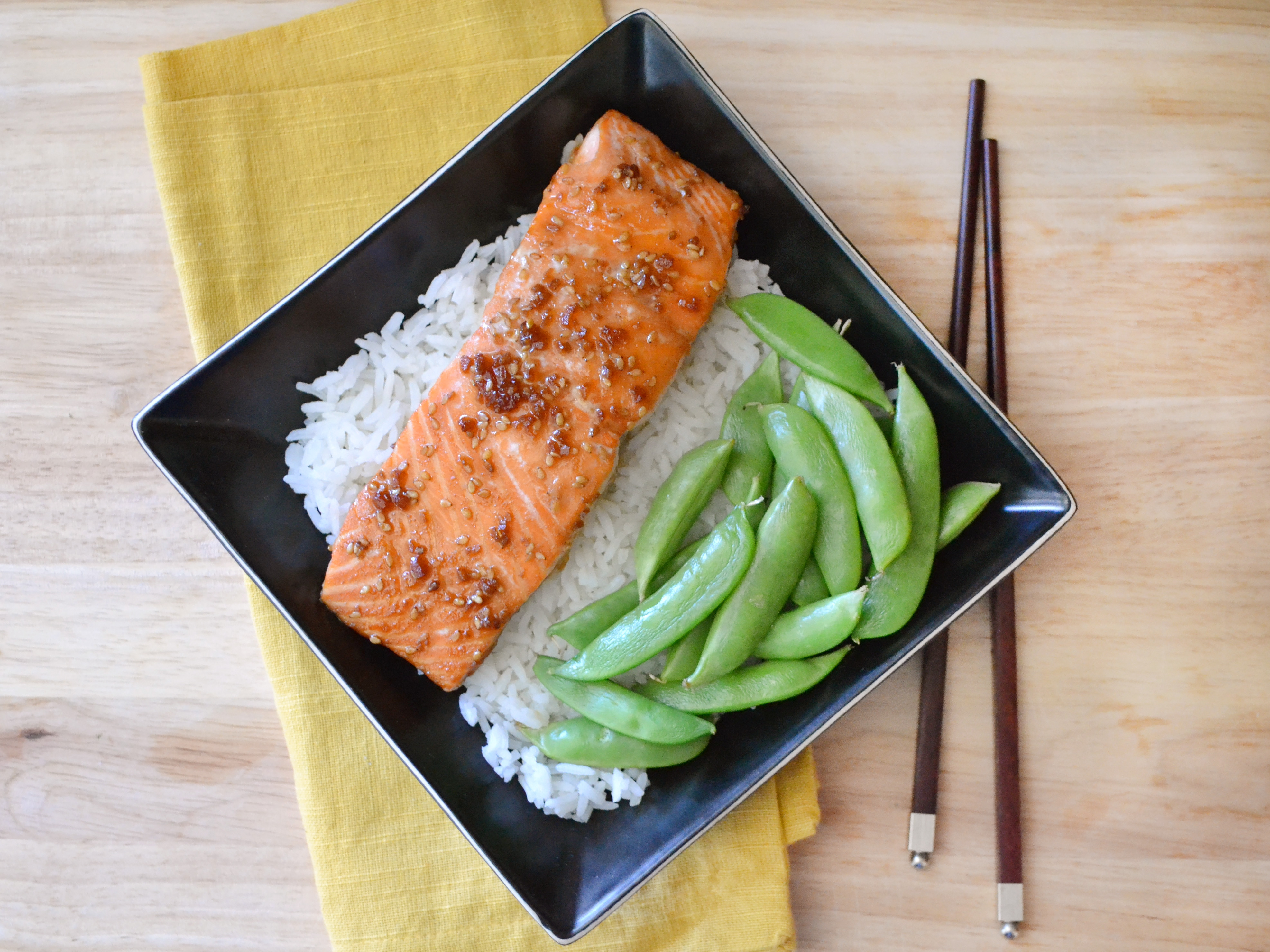
How to Bake Salmon
Baking is the easy "set-it-and-forget-it" method for cooking salmon. There's no fiddling or babysitting fish in a temperamental, hot skillet. Just add your favorite sauce or marinade, pop it in the oven, and let it do its thing while you prepare the rest of your dinner. With an endless number of sauces to choose from, this insanely simple dish never gets old.
1 Pick your salmon

Bad fish in will always equal bad fish out, no matter how much sauce or seasoning you add, so always start with a good quality filet. Look for a firm-fleshed filet that is not separating along the grain or turning brown around the edges. It should have a slight sheen and look slightly translucent—never cloudy or dull. Always give the salmon a quick sniff to check for a fishy odor; an overly fishy smell indicates sub-par freshness.
2 Remove scales, rinse and dry

Keep the skin intact to help insulate the fish as it bakes and help prevent a stuck-to-the-pan disaster. If the scales are still attached to the skin, simply scrape against the grain with the blade of a large chef's knife and they'll pop right off. Give the filet a quick rinse to remove any rogue scales, then dry well with a paper towel.
3 Marinade your salmon

Cut the filet into single portion pieces (four to six ounces each) and place them in a shallow baking dish or on a rimmed baking sheet. Line the dish with aluminum foil or a coat with a healthy dose of non-stick spray to save yourself a lot of stress during clean up.
Coat the salmon in your favorite marinade or sauce. For a super-quick fix, I like to use store-bought teriyaki marinade, but the sky's the limit when it comes to possible flavors. Honey mustard, soy-Dijon, cilantro-lime or even a simple compote made with fresh herbs and olive oil are all excellent options.
4 Bake

Bake the fish in a pre-heated 400 degree oven for 15 – 20 minutes, or until it is opaque and flakes easily with a fork. Thin filets (one inch thick or less) will take less time and thick filets (one to two inches thick) will take closer to 20 minutes.
5 Test for doneness and serve

To test the fish for doneness, insert a fork into the thickest part of the filet and gently begin to twist it. If the fish separates easily along the grain, it is finished. If you're gentle and only twist the fork a little, the fork can be removed without destroying the filet. Alternatively, if you have a meat thermometer, you can insert the thermometer into the thickest part of the fish to ensure it has reached 140ºF.
And that's all it takes. What's the hardest part about baked salmon? Trying not to eat it all before it gets to the dinner table!
